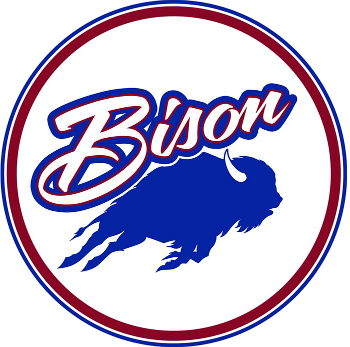European Settlement
Throughout the period of colonization of the North American continent by European countries, both England and France claimed the French Creek region as their own, creating obvious tension between these two nations. French settlers utilized the region's natural abundance for resource extraction such as timbering, hunting, and fur trapping. However, by 1750, there were at least 2.5 million English living along the east coast of the continent, anxious to expand their area of inhabitance. So, during the early 1750's, the French established a series of forts in Western Pennsylvania in an attempt to stem English penetration of the West. These French forts included: Fort Presque Isle (at present-day Erie); Fort Le Boeuf (at present-day Waterford); Fort Venango or Fort Machault (at present-day Franklin); and Fort Dusquesne (at Pittsburgh).
In 1753, a 21 year-old George Washington was called upon by Virginia's Lieutenant Governor Dinwiddie to make an arduous journey to the French Fort Le Boeuf. Sent on a mission to gather strategic information about the French for the British, and to warn the French that they were encroaching on British territory, Washington was accompanied by several Virginians, a small band of Tuscarora Indians, and later by some Seneca Indians. Washington and his party left Virginia (on horseback) in November, 1753, and traveled first to the French Fort Machault (at present-day Franklin) where Washington expected the French Commander to be.
At this point in history, French Creek was not known by this name. In fact, one early French name for the waterway was "Riviere au Boeuf" or "The Beef River" due to the number of bison (which resembled beef cattle to the French) occurring in the region at that time (most historians believe, however, that this particular bison species-- different from our typical picture of the Western Plains bison-- never had very large numbers in Northwestern Pennsylvania and was extirpated from the area at a relatively early date).
Upon his arrival at Venango (present-day Franklin), where the French Fort Machault was located, George Washington wrote in his journal that the party had finally reached "the French Creek." Although called "Venango River" on many maps even up through the late 1800's, the river is now called French Creek as named in Washington's 1753 journal entry.
When Washington and his party arrived at Fort Machault in late November or early December of 1753, the French there tried to stall him, but eventually sent him north to Fort Le Boeuf along the Venango Trail, which followed French Creek. He arrived at Fort Le Boeuf in mid-December 1753, where he found French strength to be much greater than expected. Of particular interest was a substantial fleet of canoes, which indicated that the French might move south once the winter weather subsided. Washington accepted the French Commander's written response to the British-- a refusal by the French to leave the Western Pennsylvania region which the French asserted was their rightful territory. If the British wanted to claim the area for themselves, in other words, they would have to fight the French to get it.
Washington and his party remained at Fort Le Boeuf for five days, where they were again stalled by the French. The French claimed they did not have enough feed and fodder to keep Washington's horses, so Washington was forced to send the horses back to Fort Machault. However, Washington's party was able to negotiate the "loan" of several canoes, which they used to head south on French Creek to make their way back to Virginia. Along the way, the party was "harrassed" by various Native Americans allied with the French. Washington also noted the difficulty of traversing the stream, which had formed ice jams during the winter: "We had a tedious and very fatiguing passage down the creek. Several times we had like to have been staved against rocks; and many times were obliged all hand to get out and remain in the water half an hour or more, getting over the shoals." However, the party eventually did make it back to Fort Machault, where they picked up what was left of their riding and pack animals, and returned to Virginia by January of 1754.
The British had been well aware of French plans for the Ohio and Mississippi Basin (including Western Pennsylvania and the French Creek Basin). However, Washington's trip to the French Creek region in 1753 did uncover the degree of French military preparedness. The French and Indian War began soon after, in part precipitated by the French commander's refusal of the British request to leave the Fench Creek region. Many of the battles of the French and Indian War were fought in Western Pennsylvania, although few if any as far north as the French Creek Watershed.
In 1759, the French burnt the fort down and left the area.
In 1760, the English built a new fort. It was burnt down in 1763 by Indians during Pontiac's rebellion.
In 1794, U.S. troops built several buildings on the site of what was Fort Le Boeuf. The garrison was used to protect traders and surveyors in their travels between Pittsburgh and Erie.
In 1795, the town of Waterford was laid out and accepted by the Pennsylvania legislature.
A blockhouse was built on the site of the original fort in 1796 and later burned down in 1868.
|

